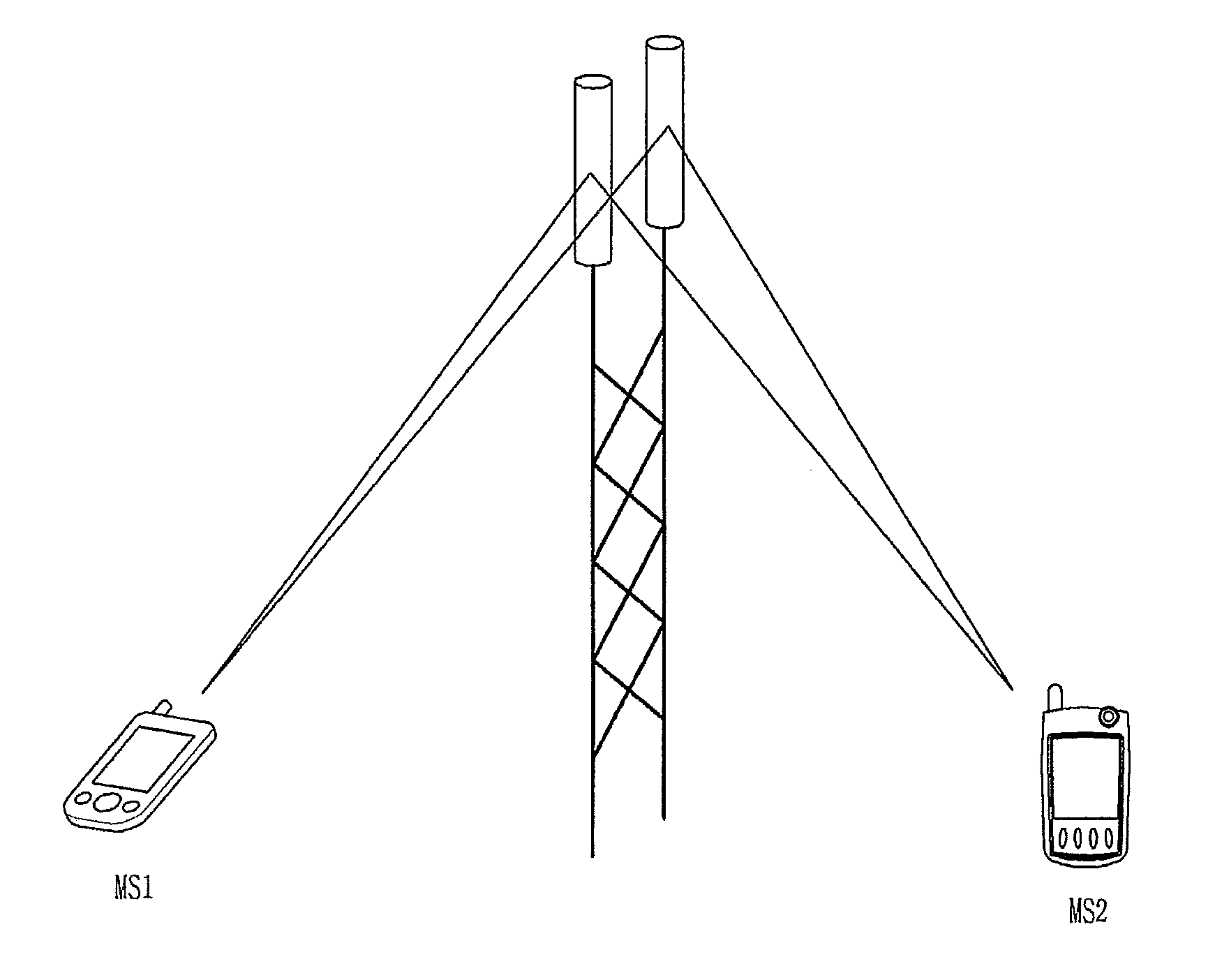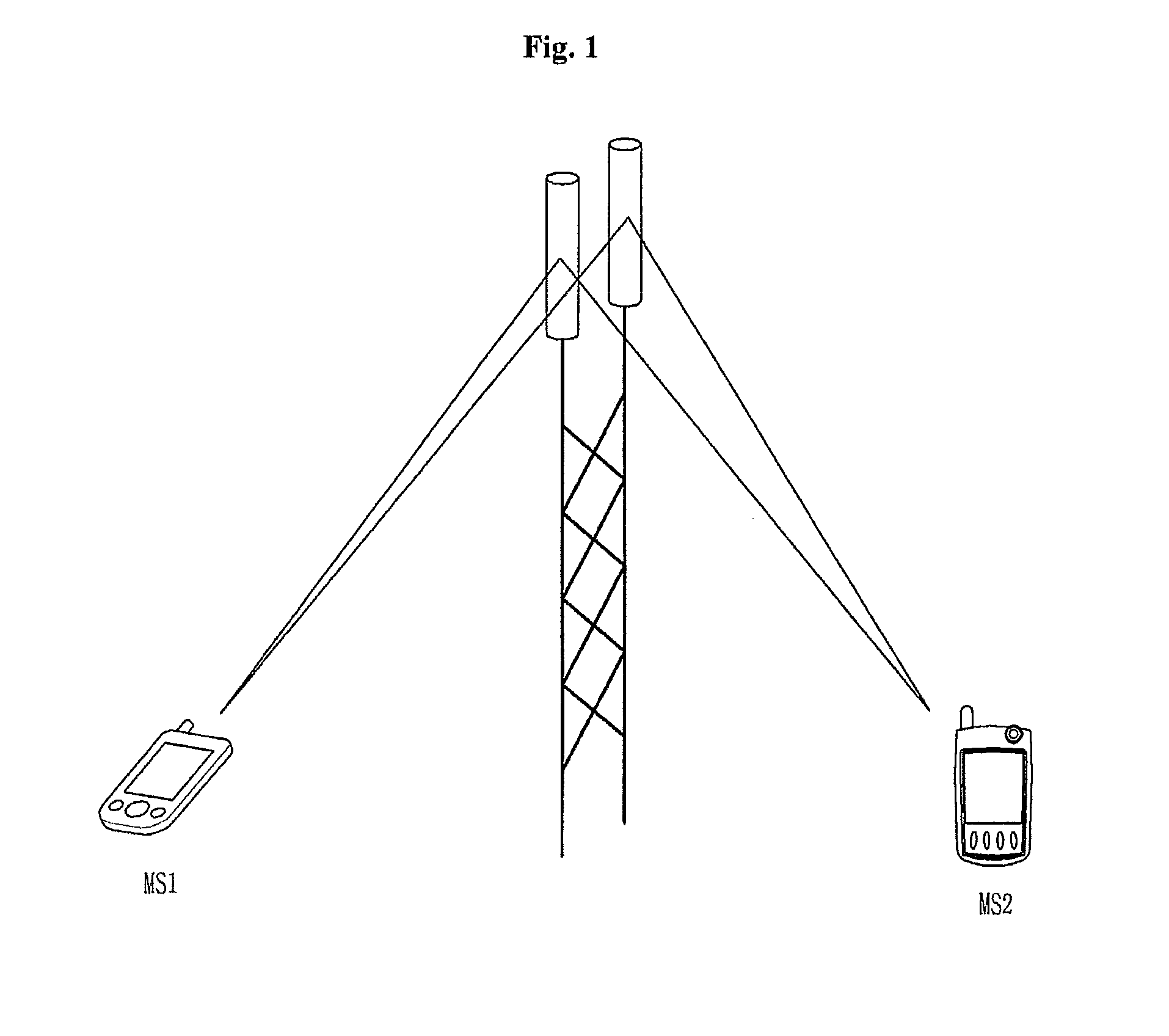Method for controlling uplink power control considering multiplexing rate/ratio
a technology of power control and multiplexing rate, applied in the field of transmission power control, can solve the problems of increasing system interference, reducing the reception performance of bs, and affecting the performance of mss which uses the same resource in a neighboring cell adjacent to the specific cell, so as to reduce the level of system interference
- Summary
- Abstract
- Description
- Claims
- Application Information
AI Technical Summary
Benefits of technology
Problems solved by technology
Method used
Image
Examples
embodiment 1
Open-Loop Power Control
[0108]Reference will now be made to how uplink open-loop power control is performed according to an embodiment of the present invention in the case where one MS uses one time-frequency-domain resource and in the case where two or more MSs simultaneously use one time-frequency-domain resource.
[0109]The method for controlling power when two or more MSs use the same resource according to this embodiment uses a power control scheme represented by a function of the number of simultaneous users M. Basically, this method does not reduce performance while maintaining a level of interference that can be obtained through the power control method in the case where one MS uses one time-frequency-domain resource.
[0110]For example, let us consider a first scheme in which a signal transmitted from one antenna of one MS through one (time or frequency) resource region is received through a plurality of antennas of a BS and a second scheme in which two or more MSs simultaneousl...
embodiment 2
Closed-Loop Power Control 1
[0121]Closed-loop power control according to another embodiment of the present invention can be represented by Mathematical Expression 6 or Mathematical Expression 7.
Pnew=Plast+ΔTPC [MATHEMATICAL EXPRESSION 6]
Pnew=A+ΔTPC [MATHEMATICAL EXPRESSION 7]
[0122]In Mathematical Expression 6, Pnew represents transmission power in a new frame, Plast represents transmission power in a previous frame, and ΔTPC represents the difference between the two transmission powers. In Mathematical Expression 7, “A” represents a reference transmission power, which may be equal to that of the equation of closed-loop power control for one MS. The BS can transmit “ΔTPC” to the MS at regular or irregular intervals. When the value “ΔTPC” is transmitted at regular intervals, the period at intervals of which the value is changed may be, without being limited to, a subframe(s), a frame(s), or a radio frame(s).
[0123]FIG. 14 illustrates a relationship between reception of a transmission ...
embodiment 3
[0140]Power control according to another embodiment of the present invention can be represented by Mathematical Expressions 8 to 11.
CLPCnew(dBm)=CLPClast(dBm)+g(M)(dB) [MATHEMATICAL EXPRESSION 8]
CLPCnew(dBm)=CLPClast(dBm)+g(ΔM)(dB) [MATHEMATICAL EXPRESSION 9]
CLPCnew(dBm)=CLPCreference(dBm)+h(M)(dB) [MATHEMATICAL EXPRESSION 10]
CLPCnew(dBm)=CLPCreference(dBm)+h(ΔM)(dB) [MATHEMATICAL EXPRESSION 11]
[0141]In Mathematical Expression 8, CLPCnew represents a transmission power of the current frame, CLPClast represents a transmission power of an immediately previous frame, and g(M) represents the difference between the two transmission powers. In the above embodiment associated with Mathematical Expression 6, the ΔTPC value, which is the difference between the transmission powers of the two signals, is transmitted. However, in the embodiment associated with Mathematical Expression 8, if the multiplexing ratio M is transmitted, then g(M) which is the difference between the transmission po...
PUM
 Login to View More
Login to View More Abstract
Description
Claims
Application Information
 Login to View More
Login to View More - R&D
- Intellectual Property
- Life Sciences
- Materials
- Tech Scout
- Unparalleled Data Quality
- Higher Quality Content
- 60% Fewer Hallucinations
Browse by: Latest US Patents, China's latest patents, Technical Efficacy Thesaurus, Application Domain, Technology Topic, Popular Technical Reports.
© 2025 PatSnap. All rights reserved.Legal|Privacy policy|Modern Slavery Act Transparency Statement|Sitemap|About US| Contact US: help@patsnap.com



